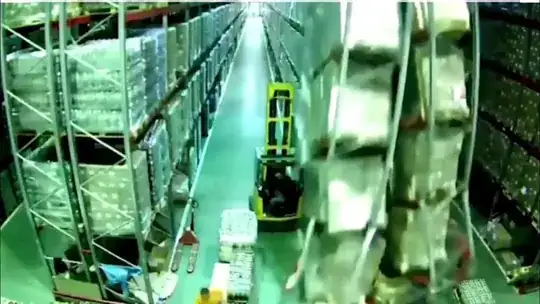I do not know if this video depicts a real incident, but it does show one type of disaster that can happen in a warehouse with overloaded shelves. I don't see any reason to believe it was faked.
The Daily Mail says that the video was uploaded to youtube without any description of where it happened. They are asking the public if they know where the footage was filmed.
The time stamp on the footage indicates it was taken in July of 2017. This Reddit thread has identified a couple of incidents that it is NOT. It is not the 2016 collapse of shelving in a cheese warehouse in Shropshire, England. Nor was it the 2016 collapse of shelving in Manassas, Virginia. Nor was it this incident in Russia. All three of these incidents show a cascading collapse of shelves caused by a small bump from a forklift.
The type of failure that started the shelving collapse is called buckling. The beams that support the shelves are loaded in compression. If the compression force is high enough and the beam is pushed out to the side a little, it can trigger a sudden collapse.
Once a single support buckles, the load it was carrying is transferred to adjacent beams, and they collapse as well. Shelves are designed to hold up a certain amount of load before buckling becomes an danger.
If the warehouse manager exceeds that load, this can happen. It is quite possible that the warehouse managers were negligent and there are criminal or civil cases tied to this collapse.
